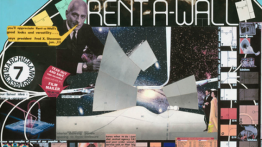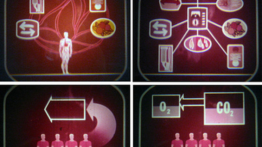Professors Lydia Kallipoliti and Michael Webb Awarded 2014 Graham Foundation Grants
POSTED ON: June 10, 2014
Lydia Kallipoliti has been awarded a production grant for her upcoming exhibition project "Closed Worlds: The Rise and Fall of Dirty Physiology," and Michael Webb has been awarded a grant for his upcoming publication "Two Journeys."
Please read below for more information on each project:
Lydia Kallipoliti's exhibition assembles an "unexplored genealogy of closed-resource regeneration systems, which migrated from the space program to countercultural architectural groups experimenting with autonomous living. The project documents a larger disciplinary transformation in the postwar period and the rise of a new environmental consensus in the form of a synthetic naturalism, where the laws of nature and metabolism are displaced from the domain of wilderness to the domain of cities and buildings. Beyond presenting technical concerns, closed regenerative systems distill architectural concerns related to habitation: first an integrated structure where man, his physiology of ingestion and excretion, becomes as a combustion device, part of the system he inhabits. In parallel to the presentation of the historical material, the exhibition explores the resurgence of regenerative systems in architectural imagination, featuring new ‘digestive machines,’ which receive human output and converge it to various usable forms.”
The first journey in Michael Webb's "eponymous project uses the regatta course at Henley-on-Thames in England as a test bed for studying the mathematics of perspective projection. The necessarily imagined journey here has as its starting point the location of the Observer and the Vanishing Point as its destination. Due to the rapid acceleration away from the Observer, vast and distorted structures suggest themselves. In the second journey, the more specific relationship between the home and the automobile is explored. This journey by automobile to, and the arrival at, a house which is literally driven into, pleads for a new and less wasteful interrelationship between cars and buildings. It dares to suggest, paradoxically, that to further develop the concept of the drive-in house might provide the key to reducing the grim wastelands of parking and sprawl that characterizes current exurban planning."






